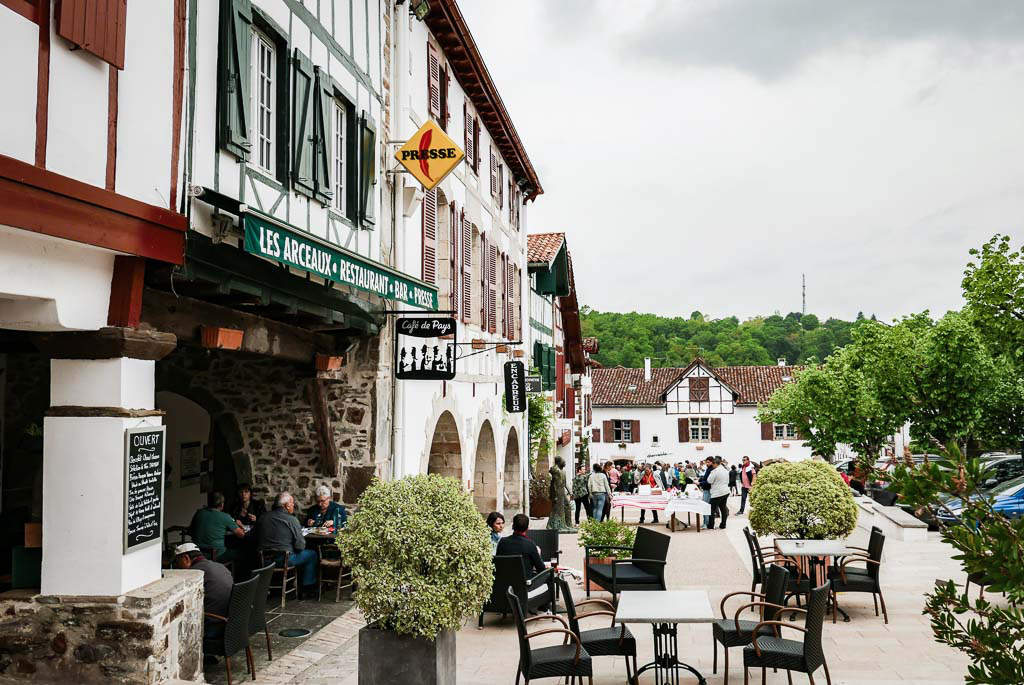
Another bastide classified among the "Most beautiful villages of France".
Founded at the end of the 13th century by Louis I of Navarre, future Louis X the Hutin, the Bastide-Clairence is a superb Basque village, with many typical red and green half-timbered houses.
The most remarkable surely is the church of the village, unique in the Basque Country with the tombs placed under the meadows that surround it.
With a peculiarity, the dates appearing on these tombs in the months of September, October and November are engraved "7bre, 8bre and 9bre".
The houses are lined up along two main streets, connected to each other by six cross streets, erected every six houses.
The trinquet
If the trinquets are numerous in the Basque Country, the one of La Bastide-Clairence offers the rare particularity of being an old palm game converted into a trinquet. Acquired in 2008 and restored by the municipality, the "Gartxot" trinquet has been the subject of dendrochronological analyses, a scientific method that makes it possible in particular to obtain year-round dating of pieces of wood by counting and analysing the morphology of the growth rings (or rings)...
Having established the origins of the building in the 16th century, probably in 1512, these measurements thus revealed one of the oldest palm games in France. Protected as a Historic Monument since 2011, the building is once again in use today.
Another curiosity of La Bastide-Clairence is its Jewish cemetery, which today depends on the Jewish Consistory of Bayonne.
Office de Tourisme de La Bastide Clairence - Pays Basque
Maison Darrieux
Place des Arceaux
64240 La Bastide-Clairence
labastideclairence@otpaysbasque.com
Translated with www.DeepL.com/Translator
(free version)






